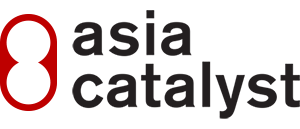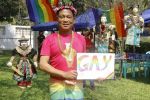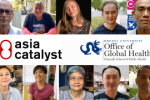By Sara L.M. Davis
Background
This spring, when the International AIDS Society announced the program for AIDS 2012, the big HIV/AIDS conference that recently concluded in Washington D.C., the MSM Global Fund expressed concern that “only a fraction of high-quality abstracts” from men who have sex with men (MSM) had been accepted. Other activists and networks representing Key Affected Populations (KAPs) concurred in emails sent to the International Treatment Preparedness Coalition (ITPC) list that they too felt they were being excluded from the program.
My poster presentation was approved, but after the fracas I decided to use the poster for a kind of postmodern project: I went over the AIDS 2012 program to find out what percentage of the formal program was delivered by people exclusively representing either NGOs or communities living with or affected by HIV and not representing governments, academics, or the private sector, and I put the results in the poster
• Most AIDS 2012 presenters were academics and people affiliated with large research institutions;
• The abstract submission process may structurally privilege certain kinds of knowledge over others;
• As a result, NGOs and KAPS are largely speaking in the Global Village, the big NGO expo hall attached to the conference — where they talk mostly to each other.
Methods
My original plan was to go over the whole program, but there were 4,310 abstracts, and Asia Catalyst lacks a large research team. So I focused on oral presentations on Monday, July 23rd, the first full day of the conference. It’s also the day when speakers have the best chance of being heard by senior policymakers, few of whom stick around for the whole meeting — let alone have the time to stroll through the poster exhibition area.
Using the published affiliation of the first author for each abstract, I sorted presenters into
• government (including health ministries),
• UN,
• medical (as in hospital or clinic),
• academic (including research institutes and think tanks),
• foundation,
• private sector (including for-profit research institutes)
• and NGOs. In the NGO category I included networks of marginalized communities (aka MARPs, KAPs).
Not everyone fits neatly into one of these categories, of course, and I was only looking at the first day, so this is all a little impressionistic.
Results
You can see the results by type of presentation in this poster (if you missed this poster at the conference, it was at the very back of the poster exhibit hall). Professional researchers and academics came out ahead in every category. There were quite a few NGOs represented, but most of them were large international NGOs such as the AIDS Healthcare Foundation – institutions that have the resources and capacity to gather large quantities of data and analyze it. Overall, NGOs have a slightly statistically better chance of being plenary speakers than of getting an oral presentation on the program.
Conclusions
Katherine Bliss writes, in her history of the International AIDS Conference, that the conference began as a form of advocacy: it brought together medical researchers to enable them to share clinical research findings and shine a light on a stigmatized and under-resourced epidemic.
But today, the conference is also a key meeting place for policy makers, donors, and activists. It’s a place where people go to hash out major policy questions – but in order to do that in a way that enables civil society and KAPs to be part of the conversation, the conference has to be structured in such a way that everyone has an equal opportunity to be in the room. For NGOs, funding for travel (including IAS conference scholarships) is often dependent on getting an oral presentation accepted on the formal program, making it even more important that NGOs and KAPs get a shot at being on the program. If they do go to the conference but aren’t giving an oral presentation, the only place where they are likely to speak is at the Global Ghetto (aka the Global Village), where their audience is going to be mostly other NGOs instead of policymakers, donors, and influential international institutions.
However, the IAS abstract submission process may inadvertently make it challenging for grassroots NGOs or networks to get onto the program. Two of the five scientific tracks are reserved for “hard sciences”: Basic Science and Clinical Science. Two are reserved for quantitative social science research: Epidemiology and Prevention Science, and Implementation Science, Health Systems and Economics. For those who aren’t scientists or are not conducting quantitative research, that leaves the Social Science, Human Rights and Political Science track.
But submissions to this track are also required to follow the framework of scientific research. The guidelines state that “Abstracts in all Tracks and without exception should be structured” according to a format that includes Methods including “study design, study population, ethical considerations, data collection and methods of analysis used.” Would an analysis of international human rights standards fit into this framework? How about a field report or a theoretical essay?
The IAS abstract submission form and peer review process makes it challenging for activists, lawyers, or policy analysts to get on the formal program and inadvertently privileges certain kinds of knowledge over others. Many lawyers working on human rights and HIV/AIDS would find it difficult to frame their papers as quantitative research. Networks of marginalized populations, or for that matter faith-based organizations and AIDS doctors, may not have the resources to conduct such surveys and analyze them effectively.
But they still have knowledge and expertise we need to fight the pandemic, and the IAS could bring that expertise front and center by creating more and different ways of presenting work at the conference – and on the main program, not just the Global Village.
Sara L.M. Davis, PhD, is executive director of Asia Catalyst




